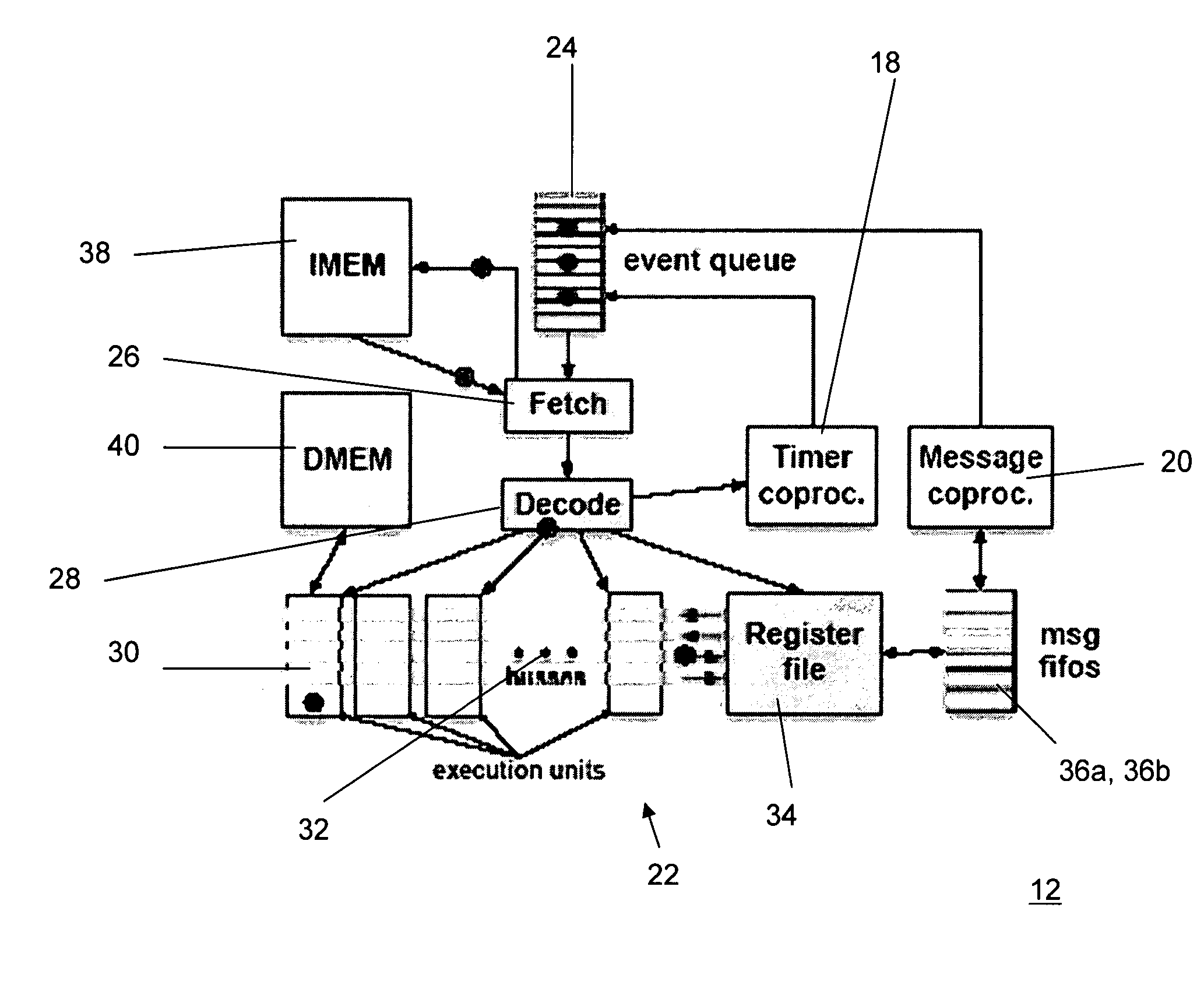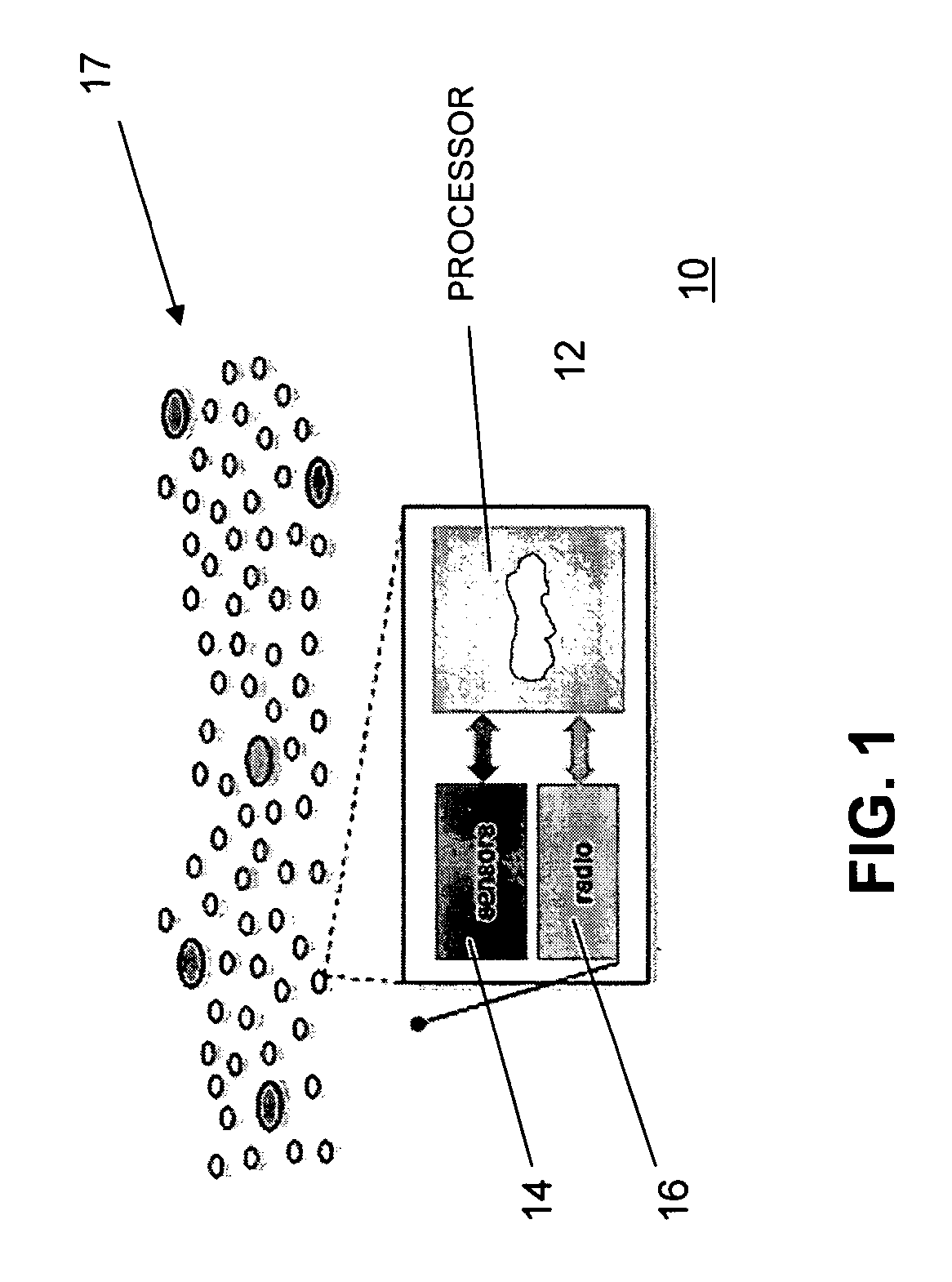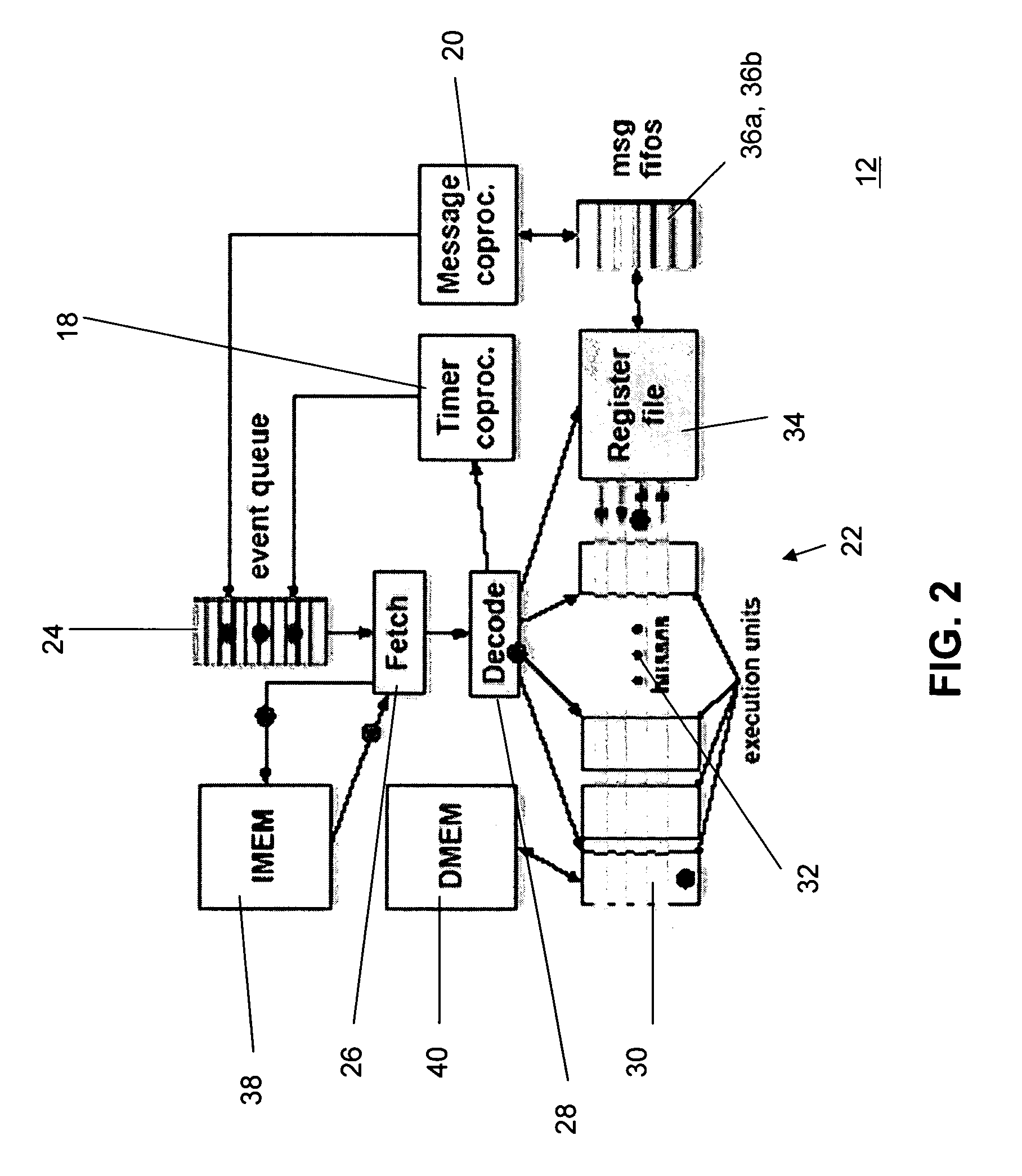Sensor-network processors using event-driven architecture
a sensor network and processor technology, applied in the field of processors, can solve the problems of large complexity of wireless sensor network deployment, large power consumption of each component in the network, and in the network as a whole, so as to reduce the cost of deployment. , the effect of removing another source of energy was
- Summary
- Abstract
- Description
- Claims
- Application Information
AI Technical Summary
Benefits of technology
Problems solved by technology
Method used
Image
Examples
Embodiment Construction
[0018] A first preferred embodiment of the present invention comprises a processor architecture that is optimized for data monitoring operations in sensor networks with minimum energy consumption. Preferably, though not required, the processor is an asynchronous microprocessor that contains hardware support for commonly-occurring operations in sensor networks. The processor is event-driven, with extremely low-overhead transitions between active and idle periods. The use of asynchronous circuits results in automatic, fine-grained power management, because circuits that are not required to perform a particular operation do not have any switching activity. Using asynchronous circuits also necessitates that glitches or switching hazards be eliminated in the processor, thereby removing another source of energy waste.
[0019] The hardware support for event execution in the processor obviates the need for the processor to run an operating system. Not having to run an operating system not on...
PUM
 Login to View More
Login to View More Abstract
Description
Claims
Application Information
 Login to View More
Login to View More - R&D
- Intellectual Property
- Life Sciences
- Materials
- Tech Scout
- Unparalleled Data Quality
- Higher Quality Content
- 60% Fewer Hallucinations
Browse by: Latest US Patents, China's latest patents, Technical Efficacy Thesaurus, Application Domain, Technology Topic, Popular Technical Reports.
© 2025 PatSnap. All rights reserved.Legal|Privacy policy|Modern Slavery Act Transparency Statement|Sitemap|About US| Contact US: help@patsnap.com



